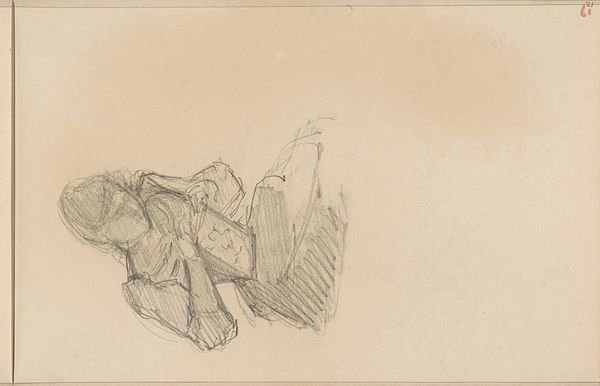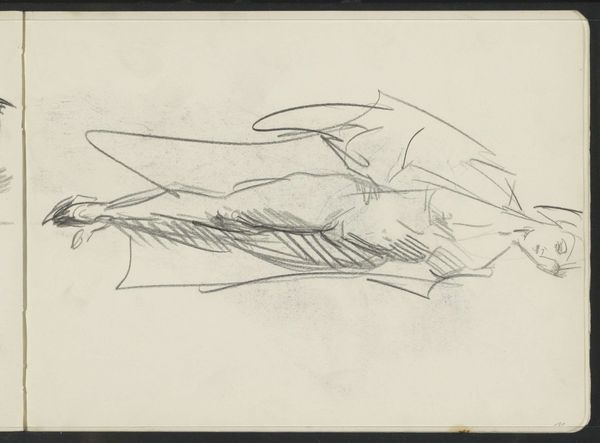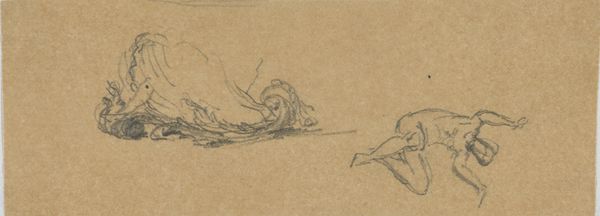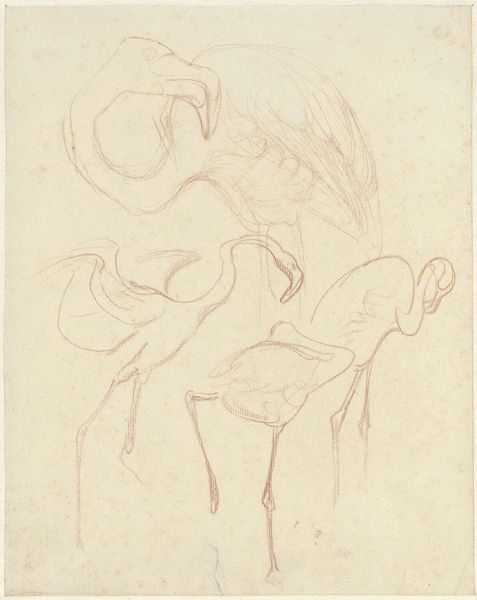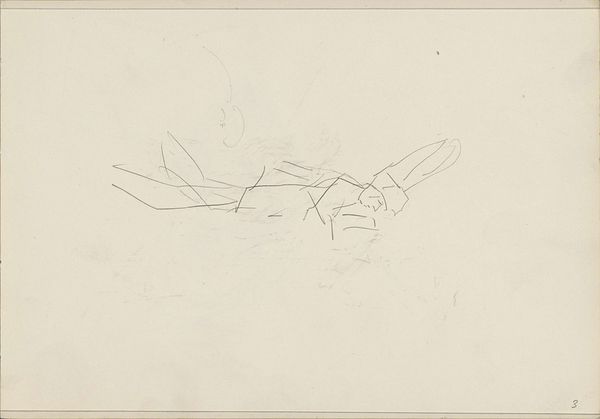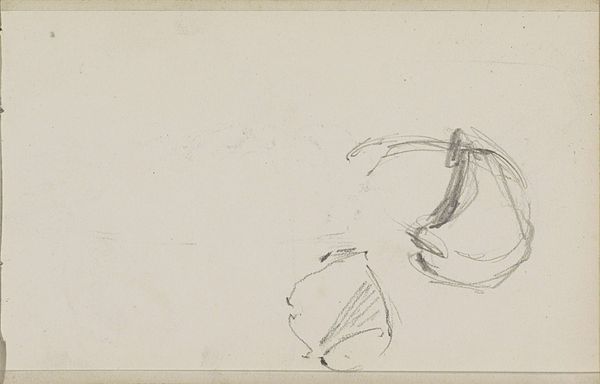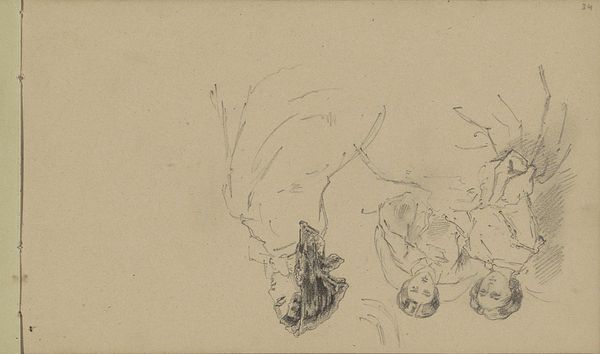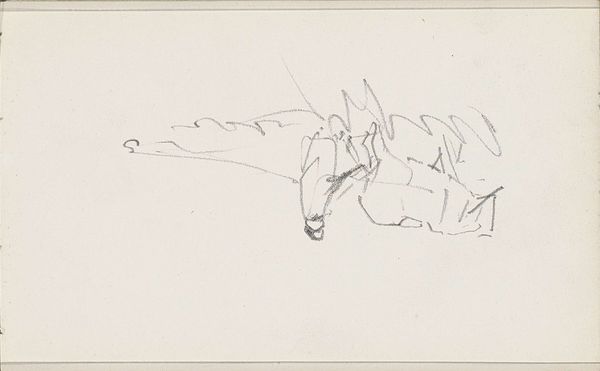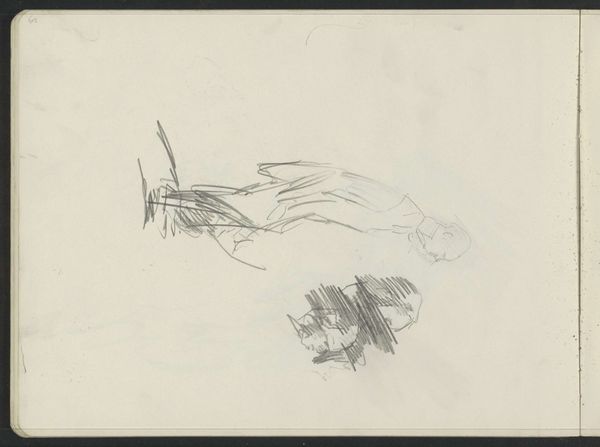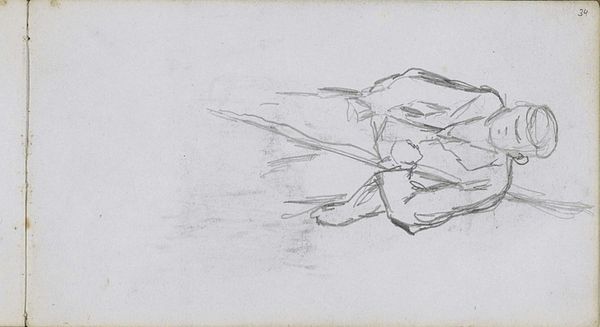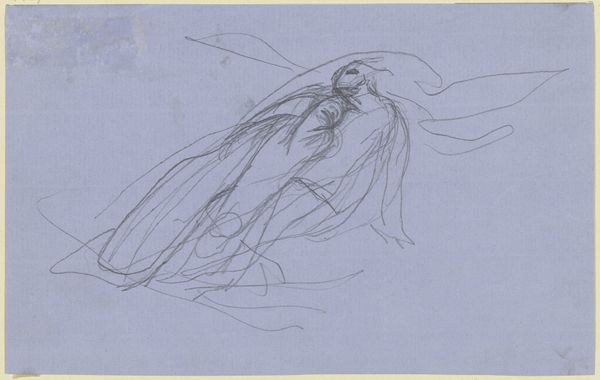
Copyright: Rijks Museum: Open Domain
Curator: The hurried nature of the pencil strokes gives it an almost ghostly quality. What are your first impressions of this portrait? Editor: Frailty, I think. There’s a delicate, vulnerable quality to it, almost as if the woman might disappear from the page at any moment. I'm reminded of issues surrounding the female body during that time. Curator: Indeed, there is a sense of capturing a fleeting moment. We're looking at a pencil sketch entitled "Standing Woman, in Profile" by Isaac Israels, created somewhere between 1930 and 1934. It’s currently held at the Rijksmuseum. Do you notice any recurrent symbols or patterns emerging in his representation? Editor: What stands out most is how little definition there is. Her form is suggested rather than explicitly defined, almost blurred, reflecting, perhaps, a sense of societal erasure or objectification of women during that time period. What about you? Anything particularly jump out from the drawing? Curator: For me, it's how he's captured a sense of movement with minimal lines. There’s a timeless quality to the quick, deliberate strokes, as if to say the posture of this particular woman resonates with female forms through time and culture. Israels seems to say, this woman *is* every woman. It reflects back on my awareness of how many female portraits in our museums repeat similar angles, expressions, and sartorial features. Editor: A fascinating idea. I still come back to that inherent ambiguity, a deliberate choice, it seems to me, to not fully materialize her. Could it be a critique, then, on the limited roles and opportunities afforded to women then? After all, this was still a time of profound inequality in much of Europe and America. Curator: That’s a great interpretation. On one level, you’re right: ambiguity, the uncertainly with just few confident lines for this "standing women in profile." I am moved to ask if Israels invites us to project our own understanding of "femaleness," or of womanhood on to the work. I see him inviting that experience through her. Editor: And now it's almost as if the work *itself* stands, inviting us to bring not just meaning to Israels' artwork, but further debate for decades to come! Thank you, this has really opened a window.
Comments
No comments
Be the first to comment and join the conversation on the ultimate creative platform.

